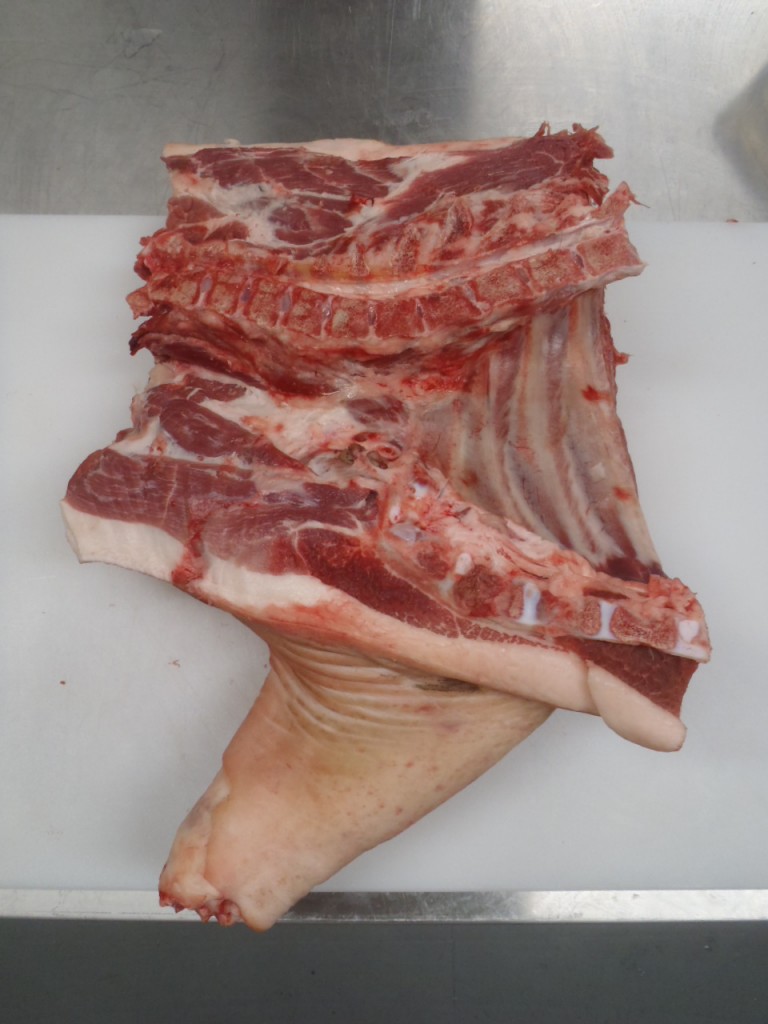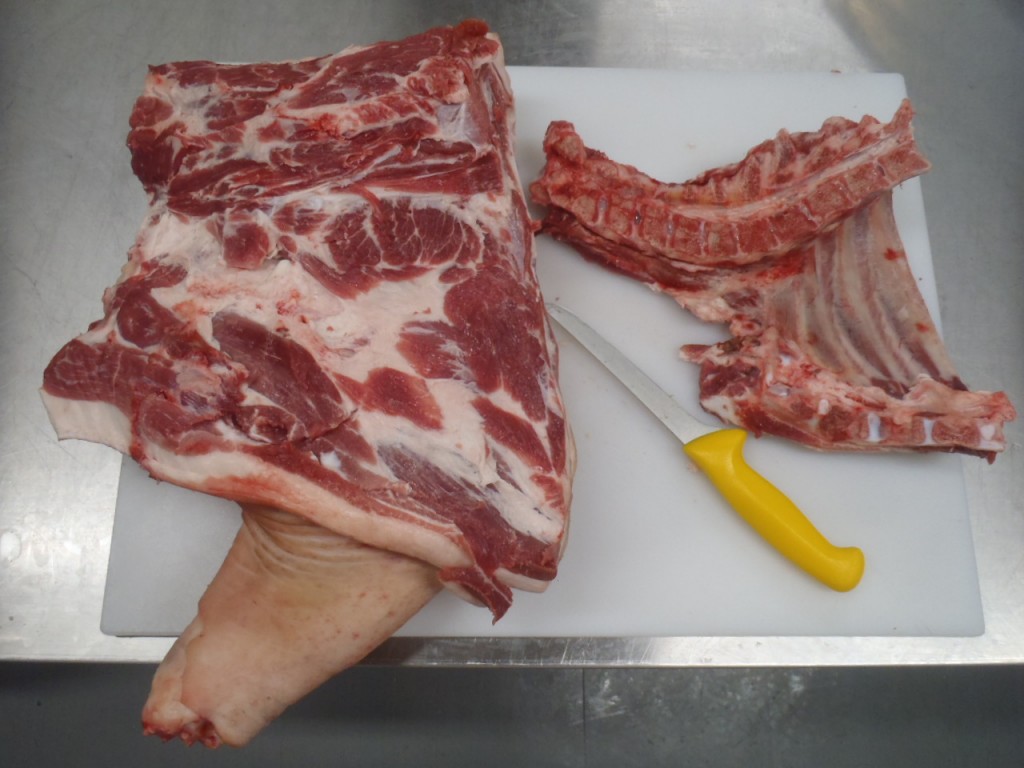This is the best primal, without question. It is the source of the best pulled pork, the best roast pork, the best sausages, the best confit, the best… you get the idea.
Below is a pork shoulder, as it looks straight from the side. You can see the neck bones on the left, followed by the first few thoracic vertebrae and ribs. At the bottom is the front hock.
The neck, back, and rib bones separate surprisingly easily from the meaty shoulder. I start by cutting behind the feather bones, then follow the chine and ribs…
…which all come off it one piece, like so:
Next I remove the hock. As with the hind hock, I prefer to separate at the joint. First I feel around for the joint.
I cut to expose the joint, then lean on the hock to snap the connection.
Here’s the shoulder primal with the removed hock:
Next we remove what is my favourite roast from my favourite primal. This cut goes by many, many different names:
- Unfortunately the most common terms are the Italian ones. There are two Italian words for the cut. First is capocollo (variously spelled capicolla, capicola and so on in North America), which is a combination of the words capo (“head”) and collo (“neck”). The second is coppa, which means “nape.” It is one of the most important cuts in Italian salumi, or air-dried meat.
- In Germany and Austria the cut is called the Schopf, which translates to something like tuft, or crest.
- In North America I’ve seen this cut marketed under any and all of the Italian words, as well as a “blade roast,” which is a bit confusing, as it doesn’t contain the shoulder blade.
- Cooks often refer to the cut as “pork neck,” though to me this is inaccurate, because it is only a small portion of the neck.
- It is in fact the back of the neck. Thankfully the English language has a term for the back of the neck: “nape.” That is what this cut of meat should be called by all English-speakers.
I follow this seam up the shoulder, rolling back the meat as I go.
Here is the nape, removed from the shoulder primal:
The nape has fantastic marbling within and between its various muscles, and when cleaned properly it forms a beautiful, perfectly cylindrical roast. Here is a cured, smoked Schopf from an Austrian butcher shop:
Next we make use of another natural seam that is more or less ignored in North American meat-cutting. The true shoulder of the pig, that is, the meaty hunk containing the shoulder blade and arm bone, separates cleanly from the surrounding fat and meat. I refer to this piece as the true shoulder or shoulder proper to distinguish it from the shoulder primal.
In the photo above, the fatty slab at left has a bit of meat on the bottom left hand side. This is a flat, uniform cut which the Austrians call the Fleischtasche (literally “meat bag,” but better translated as “meat pocket.”) The name derives from its traditional preparation, which is to make an incision and stuff the cut with, say, ground pork and onions. Here is the removed, cleaned meat pocket:
To bone out the shoulder proper, I make a cut to expose the face of the shoulder blade bone:
Next I cut around the blade bone and expose the joint between the blade and the arm bone.
Now I cut out the blade bone as cleanly as possible. I find this to be the most difficult part of cutting a pig.
There is only one bone remaining: the arm bone. Once this is removed we have completely boned out our pig.
The shoulder primal has yielded us the following:
- a hock, to be brined and hot-smoked
- chine, riblet, blade, and arm bones for stock
- a blade roast (what I call the nape roast)
- a picnic roast (what I call the true shoulder roast)
- fat for sausage or curing















